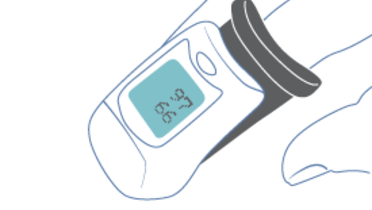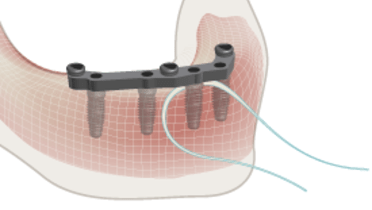-
0
Patient Assessment
- 0.1 Patient demand
- 0.2 Overarching considerations
- 0.3 Local history
- 0.4 Anatomical location
- 0.5 General patient history
-
0.6
Risk assessment & special high risk categories
- 5.1 Risk assessment & special high risk categories
- 5.2 age
- 5.3 Compliance
- 5.4 Smoking
- 5.5 Drug abuse
- 5.6 Recreational drugs and alcohol abuse
- 5.7 Parafunctions
- 5.8 Diabetes
- 5.9 Osteoporosis
- 5.10 Coagulation disorders and anticoagulant therapy
- 5.11 Steroids
- 5.12 Bisphosphonates
- 5.13 BRONJ / ARONJ
- 5.14 Radiotherapy
- 5.15 Risk factors
-
1
Diagnostics
-
1.1
Clinical Assessment
- 0.1 Lip line
- 0.2 Mouth opening
- 0.3 Vertical dimension
- 0.4 Maxillo-mandibular relationship
- 0.5 TMD
- 0.6 Existing prosthesis
- 0.7 Muco-gingival junction
- 0.8 Hyposalivation and Xerostomia
- 1.2 Clinical findings
-
1.3
Clinical diagnostic assessments
- 2.1 Microbiology
- 2.2 Salivary output
-
1.4
Diagnostic imaging
- 3.1 Imaging overview
- 3.2 Intraoral radiographs
- 3.3 Panoramic
- 3.4 CBCT
- 3.5 CT
- 1.5 Diagnostic prosthodontic guides
-
1.1
Clinical Assessment
-
2
Treatment Options
- 2.1 Mucosally-supported
-
2.2
Implant-retained/supported, general
- 1.1 Prosthodontic options overview
- 1.2 Number of implants maxilla and mandible
- 1.3 Time to function
- 1.4 Submerged or non-submerged
- 1.5 Soft tissue management
- 1.6 Hard tissue management, mandible
- 1.7 Hard tissue management, maxilla
- 1.8 Need for grafting
- 1.9 Healed vs fresh extraction socket
- 1.10 Digital treatment planning protocols
- 2.3 Implant prosthetics - removable
-
2.4
Implant prosthetics - fixed
- 2.5 Comprehensive treatment concepts
-
3
Treatment Procedures
-
3.1
Surgical
-
3.2
Removable prosthetics
-
3.3
Fixed prosthetics
-
3.1
Surgical
- 4 Aftercare
Post-surgical recommendations
Key points
- Instruct about adequate actions after surgery, correct medication, diet and hygiene, potential complications and when to make an urgent call
- Leave round the clock emergency contact numbers
- Schedule post-operative recall visits
Postsurgical recommendations
Inform patient about adequate actions after surgery. Leave around the clock emergency contact numbers in case of urgent complications.
Plan or delegate to the referring dentist postoperative recall visits, at day 1 or 2, day 8 - 14 and 4 – 6 weeks after surgery.
Bleeding, oozing
After surgery some oozing of blood at the surgical area is normal. Place gauze on the surgical area and advise patient to keep firm, continuous pressure on gauze throughout the day. Give patient some extra gauze to exchange gauze on an hourly basis. If bleeding does not stop, at latest the next day, patient should present to the clinic.
Healing abutment
If a healing abutment has been placed, explain patient that abutments will be visible in the mouth, also explain their function and positive effect on the adaptation of soft tissues to the implant/abutment.
Stitches
Inform patient about suture removal at recall 8 – 14 days after surgery. In case of resorbable sutures material inform patient, that stitches will dissolve within 7 – 10 days.
Swelling & cooling
To reduce swelling/pain, recommend patient to place an ice pack in a handkerchief (beware of skin burns) on the face in the surgical area, as soon as arriving home. Place an ice pack for 15 minutes, interleaved with 15 minutes rests, for the first 24 hours. Keeping the head elevated, also when resting/sleeping will help to reduce swelling.
Diet
Patient can start to drink, and eat soft and/or fluid foods after intervention, as soon as local anesthesia has worn off. Suitable foods are e.g. soups, mashed potatoes, etc. Food intake will also assist intake of prescribed medication. Food with hard, small consistency such as for example nuts, should be avoided, as they can get entrapped in the surgical site, and compromise healing or even cause infections.
In case patient needs to eat, as long as anesthesia is still ongoing, advise patient to make sure that food has an adequate temperature.
Advise patient to refrain for the first 2 days after surgery from strong alcohol drinks.
Oral hygiene
To assist in keeping the oral cavity and the surgical area clean and reduce the amount of bacteria, consider to prescribe an antiseptic mouth rinse (e.g. Chlorhexidine). Advise patient to rinse 2 to 3 times per day, starting the day after the surgery, and to rinse cautiously to prevent bleedings. Mouth rinses may be abandoned after 2 - 3 weeks. Brushing the (provisional) prosthesis gently can be started 3 days after surgery, trying to avoid the surgery site. Interdental brushes and electric toothbrushes can be prescribed after healing of the surgery site.
Activities after surgery
Advise patient to refrain from intense blood pressure influencing physical and sport activities for at least 3 days after surgery to prevent bleeding and minimize swelling. Avoid any activity which could expose your mouth and jaw to a blow or similar risks.
Other useful information & recommendations
- If numbness of tongue, lip, chin stays longer than 12 hours after surgery, notify doctor
- Do not forcefully spit for 2 weeks
- Do not smoke for 2 weeks, or quit smoking
- Do not use a straw for 2 weeks
- Do not forcefully blow nose and try not to sneeze, or sneeze with mouth open
- A slight elevation of temperature after intervention is normal. If temperature persists, notify practice. Analgesics medication (see above) can reduce temperature.
- In case of sore throat and painful swallowing this should cease within 2 to 3 days



